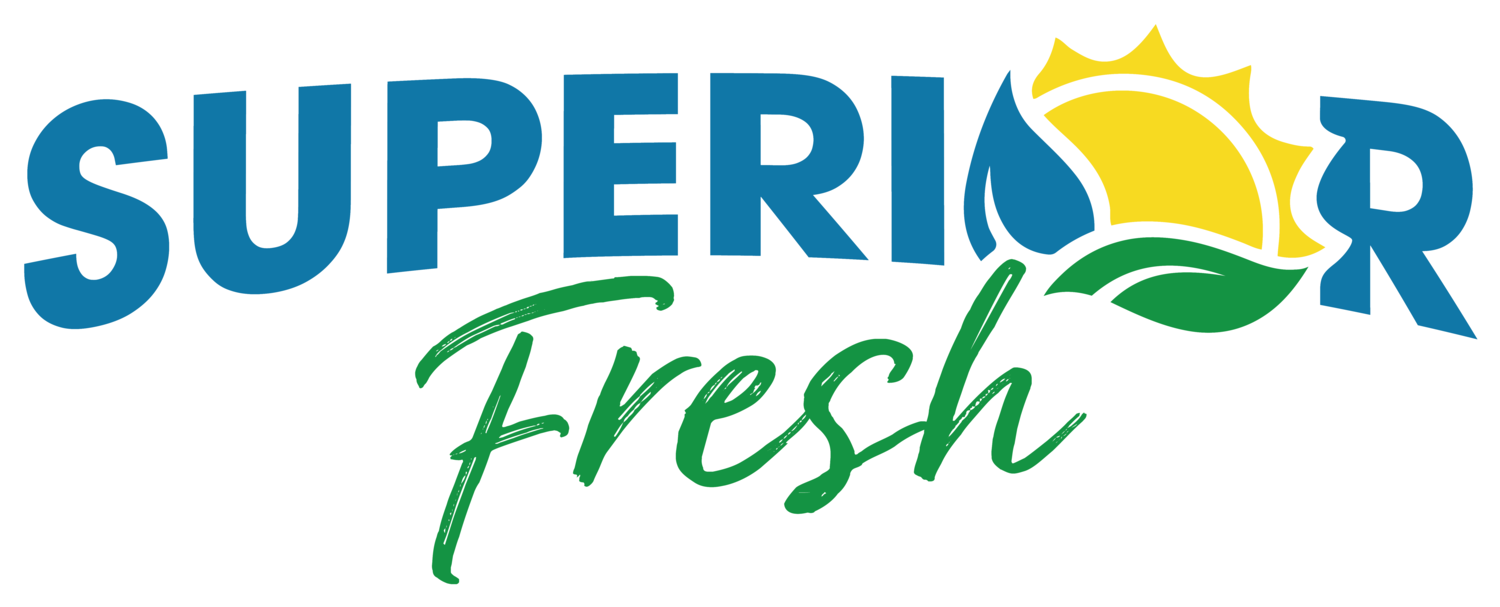Celebrating Earth Month
Reduced Carbon Footprint:
Superior Fresh salmon are raised closer to home in America’s first land-based Atlantic salmon farm. Raising our salmon in the USA means fewer miles from harvest to your plate. This helps us reduce carbon dioxide emissions that can lead to global warming. Fewer miles also means superior freshness!
—
Repurposed Waste:
On the farm, we try to give any waste product new purpose. Being an aquaponic farm we are able to recycle 99.9% of our most valuable resource, water. Additionally, any nutrient rich bi-products from our system are filtered or composted.
—
No Intrusion on Marine Ecosystems:
Nets, escapees, and disease from ocean farmed and wild caught salmon pose a threat to endangered species. Land based salmon farming is able to eliminate all these issues and provide relief to our ocean ecosystems. We’re also able to carefully monitor our fish and provide them the best care possible!
Resource Use
Through careful space and water management, Superior Fresh can grow 30x more food per acre than traditional farming and each Superior Fresh salad saves about 10 gallons of water as compared to field-grown lettuce. Our greenhouse provides safety and security to grow fresh product year-round.
—
Natural Source of Nutrients
We are proud of our organic certification and what it means to our customers! Nutrient rich water from our fish house is filtered and then sent to our greenhouse where our leafy greens can take up the excess nitrogen in the water as a natural fertilizer. No GMO’s needed.
—
Recycled Packaging
Our packaging boasts 75% post-consumer recycled material; we are re-purposing up to 4 recycled water bottles per tray of lettuce. Keep the recycling chain going and recycle or repurpose your tray once you’ve enjoyed one of our delicious salads!
800 Acres of conservation:
Superior Fresh Family Farms stewards 800 acres of land that contain several different farming and conservation projects. Including planting over 3,500 trees and shrubs, saving over 50,000,000 native seeds, and providing a welcoming environment to 110+ native bird species!
—
Land management:
The farm is home to prairie, forest, and oak savanna habitats that require monitoring and adaptation. The natural habitats are maintained through planting of native species, removal of invasives, conducting prescribed burns, pruning, weed control, and goat grazing.
—
Lake management:
The property displays two man-made lakes, each around 20-30 aces, that provide habitat for different species of birds, fish, and aquatic vegetation. Aeration is used to improve water quality and maintain a balanced healthy ecosystem. Native plants provide structure for an array of wildlife and reduce erosion.



